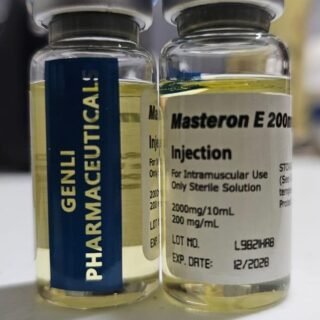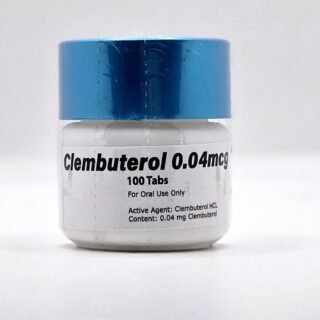Category
- Best Peptides for muscle growth
- Geno Pharma Domestic Warehouse 2 (Canada&USA)
- GP(Domestic Shipping US) Warehouse 1
- Human Pharma Premium
- Phar Labs Premium-Select
- Steroids on Sale USA, Real Steroids Online
- New arrivals in USA
- Most popular steroids in USA
- Antiestrogens / Gonadotropins
- Bangkok Steroid USA
- Biopharma Steroid USA
- British Dragon
- Anabolic Steroids for Horses
- Fat-burners
- Gen Pharma USA
- Medical Pharma Steroid USA
- Medical Tech Steroid USA
- Novocrine Steroids
- HGH USA
- Omega Labs Steroid USA
- Rotterdam Steroids USA
- SARMs USA
- Sciroxx
- Sydgroup Steroid USA
- Big vetenary Steroid USA
- Watson Steroids
- XT Labs Steroids
Most Popular steroids USA
-
 Saizen 8.8 mg (Somatropin) 26.4 UI Domestic USA
Saizen 8.8 mg (Somatropin) 26.4 UI Domestic USA
$115.00Original price was: $115.00.$98.00Current price is: $98.00. -
 PARAMIX 300 Genli Pharma – Trenbolone A, E & Hexa Mix 10 ml
PARAMIX 300 Genli Pharma – Trenbolone A, E & Hexa Mix 10 ml
$110.00Original price was: $110.00.$99.00Current price is: $99.00. -
 Testosterone 400 Biopharma 10 Ampoules
Testosterone 400 Biopharma 10 Ampoules
$99.00Original price was: $99.00.$75.00Current price is: $75.00. -
 Testosterone Cypionate 200 Biopharma 10 amp
Testosterone Cypionate 200 Biopharma 10 amp
$99.00Original price was: $99.00.$72.00Current price is: $72.00. -
 Drostanolone Enanthate 200mg 10 ml - Masteron Enanthate
Drostanolone Enanthate 200mg 10 ml - Masteron Enanthate
$110.00Original price was: $110.00.$90.00Current price is: $90.00. -
 Primobolan Pills 25mg 100 pills Domestic USA
Primobolan Pills 25mg 100 pills Domestic USA
$99.00Original price was: $99.00.$85.00Current price is: $85.00. -
 Clenbuterol for Sale 40mcg 100 Tabs - GP Premium Domestic USA
Clenbuterol for Sale 40mcg 100 Tabs - GP Premium Domestic USA
$99.00Original price was: $99.00.$65.00Current price is: $65.00.


Table of Contents
ToggleTestosterone increases spinal bone density
Testosterone
by Michael Mooney (June, 2001)
While many factors can cause bone loss in HIV(+) people, it is well-known that decreased testosterone in males and females is associated with less bone density. This is true whether a person is HIV(+) or HIV(-).
Other possible reasons people with HIV can lose bone are:
Side effects of anti-HIV medications
Use of corticosteroids
Poor nutrition, especially calcium and Vitamin D deficiencies.
In the abstract below, 200 mg of testosterone enanthate per week increased spinal bone density. Notably, the men in the study all had blood testosterone measurements that were in the normal range. As we have been saying for 6 years, the normal scale for testosterone measurements does not apply well to people with HIV. People with HIV have been shown to often require blood testosterone measurements that may be above the top of the normal scale, as shown by data from studies of Rabkin and Wagner. this often requires dosing that is twice as high as testosterone replacement administered to HIV(-) men.
If your doctor refuses to provide you with testosterone replacement because you test in the normal range, but you have the symptoms of testosterone deficiency, show them this data. If they still refuse to help you, we suggest that you get another doctor, as this can be critical to your well-being and survival.
Note that a co-author on this study is Dr. Steven Grinspoon of Harvard, who is known for his expertise and insight in this area.
Fairfield,W.P., Finkelstein, J.S., Klibanski, A., Grinspoon, S.K. Osteopenia in eugonadal men with acquired immune deficiency syndrome wasting syndrome, J Clin Endocrinol Metab,86(5):2020-2026 (2001 May.Abstract:
Multiple endocrine and metabolic consequences of human immunodeficiency virus (HN) infection exist that may contribute to bone loss in men with the acquired immune deficiency syndrome (AIDS) wasting syndrome. Recent studies suggest that anabolic strategies can increase lean body mass in men with AIDS wasting.
Prior studies have not examined the effects of anabolic agents on bone mineral density (BMD) or bone turnover in these men. To determine the effects of testosterone and progressive resistance training on BMD and bone turnover in eugonadal men with AIDS wasting, we randomly assigned 54 eugonadal men with AIDS wasting (weight < 90% IBW or weight loss > 10% from preillness baseline) to receive either testosterone enanthate (200 mg/week, im) or placebo and to progressive resistance training (3 times/week) or no training in a 2 x 2 factorial study design for 3 months. The BMD of the lumbar spine, proximal femur, and total body; lean body mass; and fat mass were measured by dual energy x-ray absorptiometry.
Total body scans were repeated after 12 weeks of therapy. Baseline bone turnover and BMD were compared with those in 35 age-matched healthy non-HIV-infected control subjects. Compared with controls, lumbar spine BMD (1.021 +/- 0.018 us. 1.084 +/- 0.025 g/cm(2); P = 0.04) and total hip BMD (0.951 +/- 0.017 us. 1.070 +/- 0.019 g/cm(2); P < 0.0001) were reduced in men with AIDS wasting. T-scores were lower in men with AIDS wasting at the lumbar spine (-0.62 +/- 0.17 us. – 0.07 +/- 0.23, P = 0.05) and total hip (- 0.65 +/- 0.11 us. +0.20 +/- 0.014, P < 0.0001). Total hip T scores were less than – 1.0 in 33% of men with AIDS wasting. Neither the use of protease inhibitors nor the duration of protease inhibitors use correlated with BMD.
Serum osteocalcin levels were lower(3.63 +/- 0.29 vs. 4.54 +/- 0.31 nmol/L; P < 0.04) and urinary N-telopeptide excretion was higher (45.4 +/- 4.5 us. 26.8 +/- 3.0 nmol BCE/mmol creatinine; P = 0.004) in men with AIDS wasting than in controls. Lumbar spine BMD, as assessed on regional total body dual energy x-ray absorptiometry scan, increased over the 12-week treatment period in response to testosterone (+2.4 +/- 1.3 vs. -1.3 +/- 1.0%, testosterone os, placebo, respectively; P = 0.02), but not in response to training (+0.8 +/- 1.0 vs. +0.4 +/- 1.3%, training vs. no training; P = 0.70). Lumbar spine and total hip BMD are reduced in eugonadal men with AIDS wasting.
Biochemical markers of bone turnover suggest that bone formation and bone resorption are uncoupled in these men. Testosterone administration, but not resistance training, over 3 months increases lumbar spine BMD in eugonadal men with AIDS wasting.
Share this page:
- Click to share on X (Opens in new window) X
- Click to share on Facebook (Opens in new window) Facebook
- Click to email a link to a friend (Opens in new window) Email
- Click to share on LinkedIn (Opens in new window) LinkedIn
- Click to share on Reddit (Opens in new window) Reddit
- Click to share on Pinterest (Opens in new window) Pinterest
- Click to share on Telegram (Opens in new window) Telegram
- Click to share on WhatsApp (Opens in new window) WhatsApp
- Click to share on Tumblr (Opens in new window) Tumblr
Written by Steroids USA
Pay with WISE APP or Remitly
Pay with WISE App or Remitly
Fast money transfers from USA for fast delivery of steroids
Secure delivery in USA
100% reliable shipping in USA
24x7 Support
Online 24 hours
Low cost delivery
Great shipping prices in USA
BULK ORDER DISCOUNT
If you are a reseller in the USA you can get a special DISCOUNT, we can give you up to 50% or more on bulk orders. If you want to make a bulk order, we can negociate for orders of over USD$4,000, contact us by email.
Steroids info










